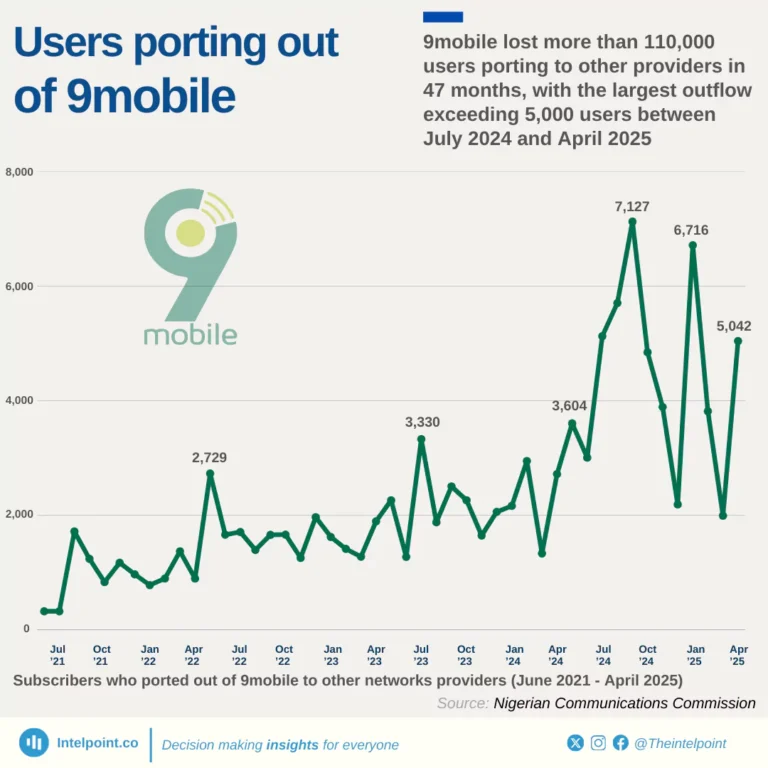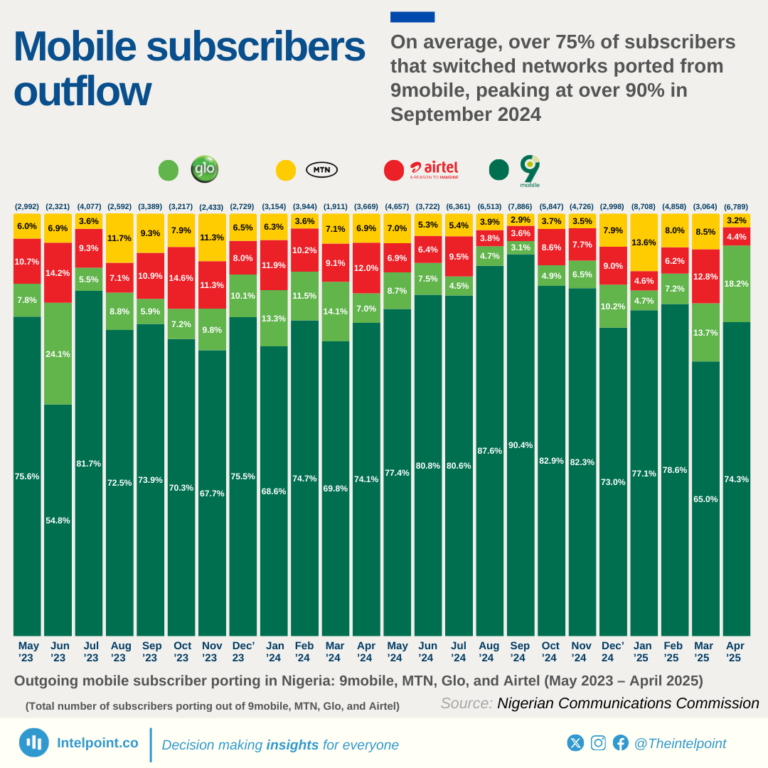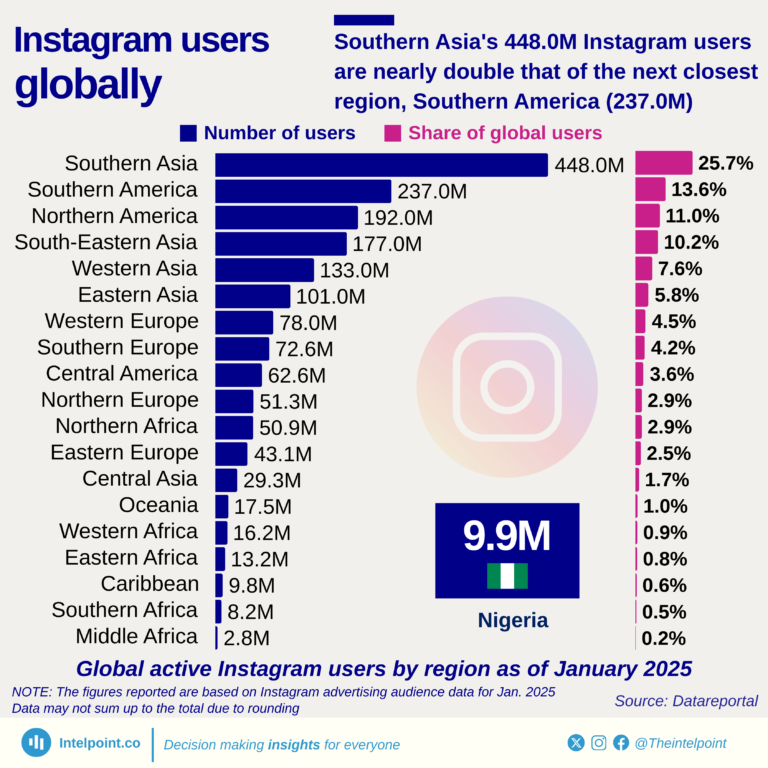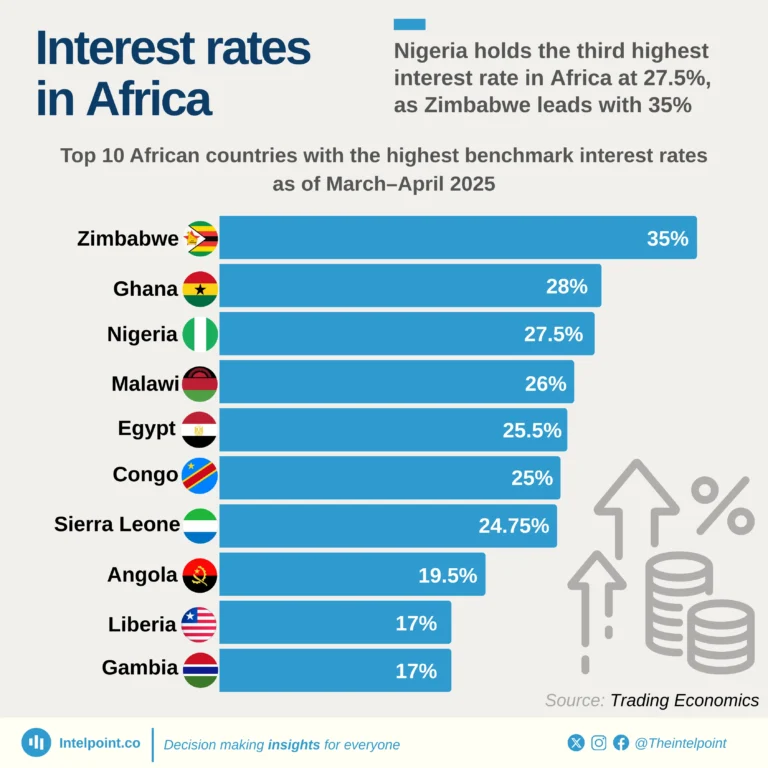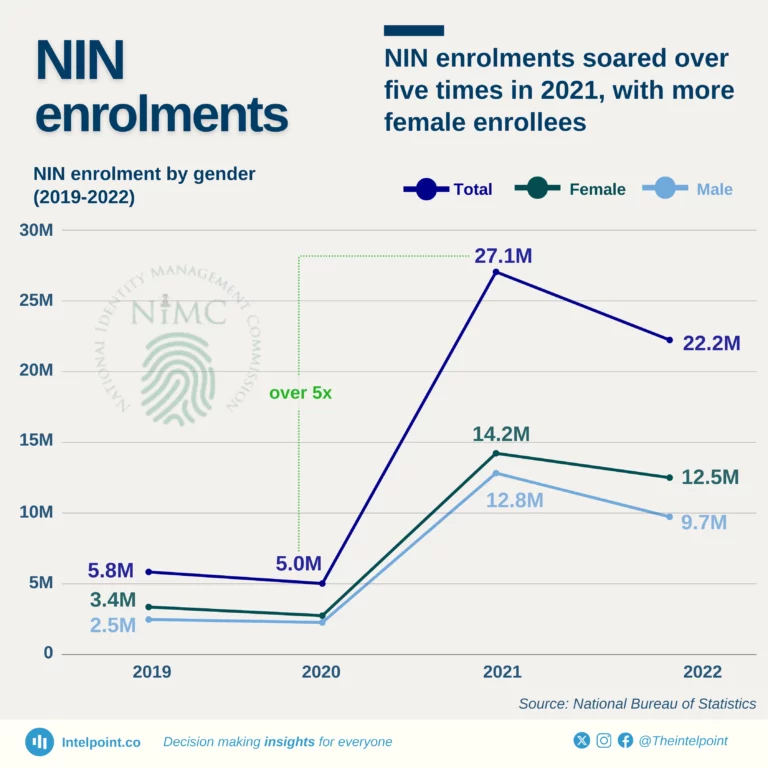
New NIN enrolments increased by over fivefold in 2021, reaching 27.1 million. Interestingly, women were responsible for this surge. For many Nigerians, 2021 marked a race against deadlines as NIN registration became mandatory for critical requirements, including SIM card usage and registration. This urgency drove the record-breaking numbers. The number started falling in subsequent years (from 2022), with 22.2 million total new enrolments in 2022 and 10.13 million (according to Punch News) new enrolments in 2023.
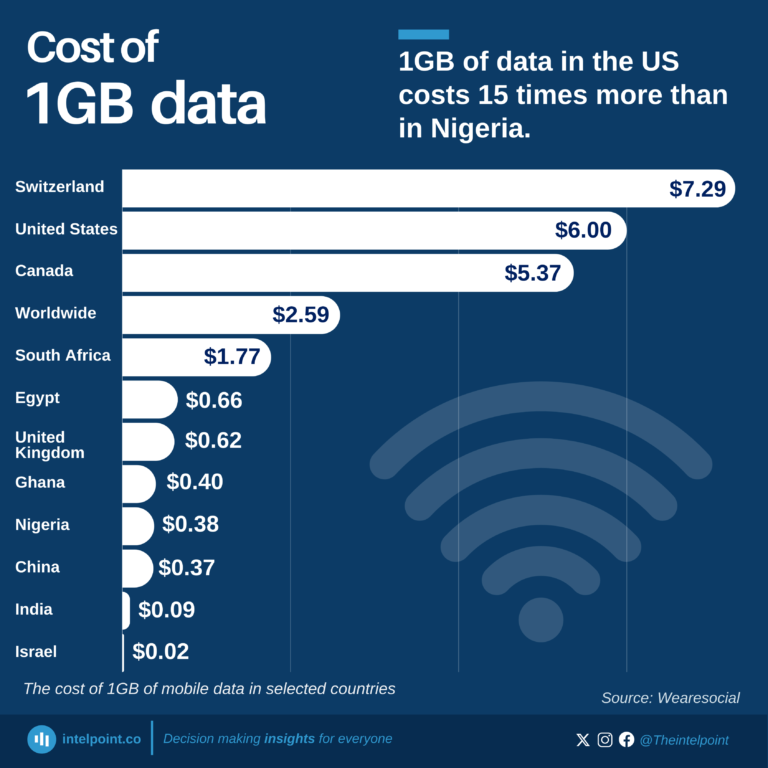
The cost of accessing the Internet isn't the same everywhere. In Switzerland, 1GB of mobile data costs $7.29, the most expensive globally, while Nigeria stands at just $0.38, which is 15 times less than the cost in the United States ($6.00). Meanwhile, Israel offers the cheapest deal at only $0.02 per GB. There is a more moderate global average at $2.59.

South Africa leads the continent's market, with 41 data centres. It has more data centres than Nigeria (15) and Kenya (16), its closest competitors.
Africa's data centre market is nascent, with less than 200 centres.

Since the 1950s, the top sources of international students in the US have changed, with Canada initially leading, followed by Iran in the 1970s, Taiwan and Japan in the 1980s and 90s, and China and India taking the lead from the 2000s onward.
China and India account for a combined 54% of the total international students in the US as of the 2023/2024 academic year.
By 2021, Nigeria entered the top ten, reaching 7th place by 2024.

Since the 2007/08 academic year, Nigeria has consistently held the top spot for the number of African international students in the US. Before this, Kenya and Egypt also led in certain periods.
This trend highlights the evolving landscape of African students pursuing education in the US over the decades.

Nigeria remains the leading African country of origin for students in the US, with over 20,000 enrolled this year.
Ghana, however, recorded the continent's fastest growth rate at 45%. This increase of over 2,900 students brought Ghana’s total to nearly 9,400, making it the second-largest source of African students in the US.
Nigeria also saw a 13.5% rise, adding more than 2,380 students year-over-year.
Overall, the number of students from African countries in the US grew by nearly 12% in the 2023/24 academic year.

From the early 1960s through the 1990s, Ethiopia's cattle population growth placed it at the forefront of African livestock rearers, holding the top position with millions of cattle.
This leadership continued into the 2000s, reflecting Ethiopia's robust cattle industry on the continent. Sudan managed to take the top position a few times, mostly around the 2000s.
However, Ethiopia quickly reclaimed the top spot. Nigeria's cattle population grew from about 6.03 million in 1961 to 20.9 million in 2022, claiming 6th position in Africa as of 2022.
Africa accounted for one-fourth of the global cattle population as of 2022.

Until 1976, Ghana was the world’s largest cocoa producer, with an average annual output of 410,000 tonnes. However, Ghana lost this lead when production fell to 277,000 tonnes in 1997, allowing Côte d'Ivoire and Brazil to overtake.
Since 1977, Côte d'Ivoire has led global cocoa production, increasing its output by 634%.
Nigeria’s cocoa production peaked at 485,000 tonnes in 2006, consistently ranking among the top ten producers.
